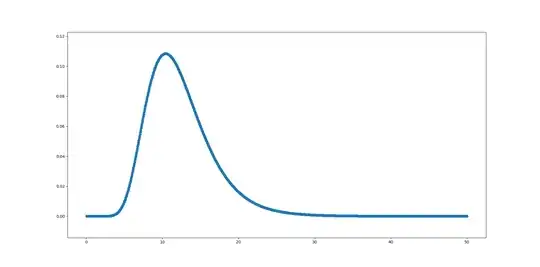Followin the suggestions of Jarle Tufto.
I coded the following.
import numpy as np
import matplotlib.pyplot as plt
from scipy import special
from scipy import optimize
osample = [8,11,18] #ordered D10, D50, D90 sample
num = 3
def lnpdf(x,mu,sigma): #lognormal probability distribution function
d = 1/(x*sigma*np.sqrt(2*np.pi))*np.exp(-0.5*(np.log(x) - mu)**2/sigma**2)
return d
def jpdfo(mu,sigma): #joint probability distributions of ordered statistic
p = 1
for i in osample:
p *= lnpdf(i,mu,sigma)
p = np.math.factorial(num)*p
return p
def nll(param): # negative log likelihood
val = -jpdfo(param[0],param[1])
return val
#minimize the nll
x0 = [10,3]
res = optimize.minimize(nll,x0=init,method="Nelder-Mead")
print(res)
What I obtain is the following:
final_simplex: (array([[2.45588837, 0.33356707],
[2.45592186, 0.33361764],
[2.45597456, 0.33356375]]), array([-0.00144556, -0.00144556, -0.00144556]))
fun: -0.001445562771159583
message: 'Optimization terminated successfully.'
nfev: 95
nit: 49
status: 0
success: True
x: array([2.45588837, 0.33356707])
So judging from this $\mu$ = 2.45 and $\sigma$ = 0.33. If I plot a lognormal distribution with these parameters, I obtain the following:

Which pretty much makes sense, given my sample data. I will call this good for now, thanks Jarle!
